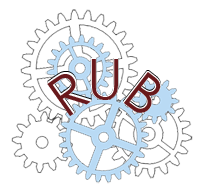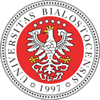Proszę używać tego identyfikatora do cytowań lub wstaw link do tej pozycji:
http://hdl.handle.net/11320/10841| Tytuł: | A Case Study of Transporting Urysohn’s Lemma from Topology via Open Sets into Topology via Neighborhoods |
| Autorzy: | Coghetto, Roland |
| Słowa kluczowe: | filter topology via neighborhoods transfer principle transport of structure align |
| Data wydania: | 2020 |
| Data dodania: | 5-maj-2021 |
| Wydawca: | DeGruyter Open |
| Źródło: | Formalized Mathematics, Volume 28, Issue 3, Pages 227-237 |
| Abstrakt: | Józef Białas and Yatsuka Nakamura has completely formalized a proof of Urysohn’s lemma in the article [4], in the context of a topological space defined via open sets. In the Mizar Mathematical Library (MML), the topological space is defined in this way by Beata Padlewska and Agata Darmochwał in the article [18]. In [7] the topological space is defined via neighborhoods. It is well known that these definitions are equivalent [5, 6]. In the definitions, an abstract structure (i.e. the article [17, STRUCT 0] and its descendants, all of them directly or indirectly using Mizar structures [3]) have been used (see [10], [9]). The first topological definition is based on the Mizar structure TopStruct and the topological space defined via neighborhoods with the Mizar structure: FMT Space Str. To emphasize the notion of a neighborhood, we rename FMT TopSpace (topology from neighbourhoods) to NTopSpace (a neighborhood topological space). Using Mizar [2], we transport the Urysohn’s lemma from TopSpace to NTop-Space. In some cases, Mizar allows certain techniques for transporting proofs, definitions or theorems. Generally speaking, there is no such automatic translating. In Coq, Isabelle/HOL or homotopy type theory transport is also studied, sometimes with a more systematic aim [14], [21], [11], [12], [8], [19]. In [1], two co-existing Isabelle libraries: Isabelle/HOL and Isabelle/Mizar, have been aligned in a single foundation in the Isabelle logical framework. In the MML, they have been used since the beginning: reconsider, registration, cluster, others were later implemented [13]: identify. In some proofs, it is possible to define particular functors between different structures, mainly useful when results are already obtained in a given structure. This technique is used, for example, in [15] to define two functors MXR2MXF and MXF2MXF between Matrix of REAL and Matrix of F-Real and to transport the definition of the addition from one structure to the other: [...] A + B -> Matrix of REAL equals MXF2MXR ((MXR2MXF A) + (MXR2MXF B)) [...]. In this paper, first we align the necessary topological concepts. For the formalization, we were inspired by the works of Claude Wagschal [20]. It allows us to transport more naturally the Urysohn’s lemma ([4, URYSOHN3:20]) to the topological space defined via neighborhoods. Nakasho and Shidama have developed a solution to explore the notions introduced in various ways https://mimosa-project.github.io/mmlreference/current/ [16]. The definitions can be directly linked in the HTML version of the Mizar library (example: Urysohn’s lemma http://mizar.org/version/current/html/urysohn3.html#T20). |
| URI: | http://hdl.handle.net/11320/10841 |
| DOI: | 10.2478/forma-2020-0020 |
| ISSN: | 1426-2630 |
| e-ISSN: | 1898-9934 |
| metadata.dc.identifier.orcid: | 0000-0002-4901-0766 |
| Typ Dokumentu: | Article |
| metadata.dc.rights.uri: | https://creativecommons.org/licenses/by-sa/3.0/ |
| Właściciel praw: | © 2020 University of Białymstoku; CC-BY-SA License ver. 3.0 or later; |
| Występuje w kolekcji(ach): | Formalized Mathematics, 2020, Volume 28, Issue 3 |
Pliki w tej pozycji:
| Plik | Opis | Rozmiar | Format | |
|---|---|---|---|---|
| 10.2478_forma-2020-0020.pdf | 297,38 kB | Adobe PDF | Otwórz |
Pozycja ta dostępna jest na podstawie licencji Licencja Creative Commons CCL


